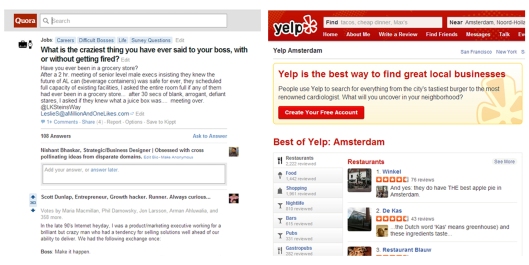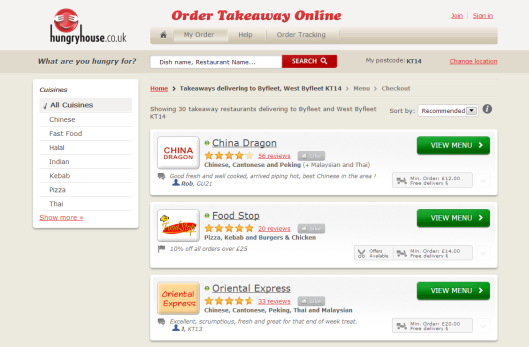This post is first part of a two part series, in which I describe how the web is providing you relevant information from the ever swelling ocean of information.
1. Think of the ‘10 minute’ shower you took this morning. Now think about this – in 2013, we are creating the same amount of data every 10 minutes that we did from the beginning of recorded time until 2003!
2. Imagine you entered a search query on a multibrand flight ticket web-shop to see rates of Amsterdam to Vienna flights for a certain date. How do you feel while the website makes you wait for 15 seconds by displaying ‘one moment please’ before it returns the results?
The above two cases underline two very fundamental aspects that are shaping internet based business ecosystem: we are generating content at an exponentially growing rate, and we expect to have relevant information at our fingertips.
In order to provide us with relevant information from ever swelling ocean of information, companies need to organize new information continually and present relevant information in an easily assimilable way. However, no internet based company has the complete answer to what is the best possible way to do so. And to add to the woes of the companies, the challenge only gets tougher by day as the amount of content grows and our average attention span decreases. It turns out that today the pursuits of companies is a work in progress. Nevertheless, it is worthwhile to take a look at the various strategies that are applied in organizing and presenting information. Below I describe some strategies that I have identified.
Organizing
1. Rated/Tagged by people
The most basic form information organization on internet is based on rating or tagging by people. When people rate an app on Google Play, vote up an answer on Quora, or rate a restaurant on Yelp, they are basically participating in the process of organizing information. When people hashtag their tweets, or fill in details such as location, price and bed-type while posting their apartment on Airbnb, they are once again participating in the process of organizing information. Simple and versatile, rating and tagging are two unsung heroes of internet.

2. Curated by people
There are many websites which enable people to curate content in a way people consider meaningful. 8tracks lets people create and share playlists. Flipboard lets people create and share their own virtual magazines. YouTube lets people create and share their own video channels. The basic idea behind enabling people to curate content is to organize information in chunks that have some sort of ‘soul’, which results from the unique tastes and preferences of the person curating it.
3. Curated by company
Oftentimes internet based companies curate information in way the company considers it to be appealing to its target customers and fitting to its own business objectives. Examples: Amazon’s books, movies, music and games, among other things; and Delivery Hero’s restaurant menus.

4. Tagged/Rated by machine
All of us know how amazing Google Search is. Google’s servers work incessantly to index content from across the web and the process involves advanced forms of tagging and rating. The amount of computing that goes on to enable Google’s super-fast search is unimaginably massive. The search function of many other websites, such as that of a multibrand flight ticket web-shop, is also algorithm driven, but they are of much modest scale and scope.
When it comes to organizing information in a meaningful way, companies apply several strategies in combination to deliver the best possible results to people. Let’s consider an example. As I write this, I am listening to Bonobo’s ‘Stay the Same’ in the playlist ‘Cigarette & cold morning’ on 8tracks. It turns out the playlist creator retrieved the song from SoundCloud. Most probably she searched for the song using the song-title and/or the artist tags. She put together the playlist ‘Cigarette & cold morning’ by selecting songs that suited the theme she was trying to create. She tagged the playlist with words – relax, chill, smoking, morning, french. When I searched for playlists on 8 tracks using the tags – ‘french’ and ‘chill’, I got a list of several playlists. I glanced through the list of playlists, and chose ‘Cigarette & cold morning’ because of several reasons – number of plays and likes were high, the other tags looked acceptable, and the cover art and description were attractive. Interestingly, I was able to glance through the list of playlists, and register information about number of plays and likes, the tags, and the cover art and description within just a few seconds. As we discussed at the very beginning, presenting information in an easily assimilable way, is as important as, organizing information meaningfully.
I discuss some of the strategies that are applied to present information in an easily assimilable way in my next post. Click here to read Part 2/2.
What is your take on doing business in today’s internet based business context? Would you like to add something to the information I presented in the post? I would love to know your views.
To stay tuned with me Follow @nbhaskar888











